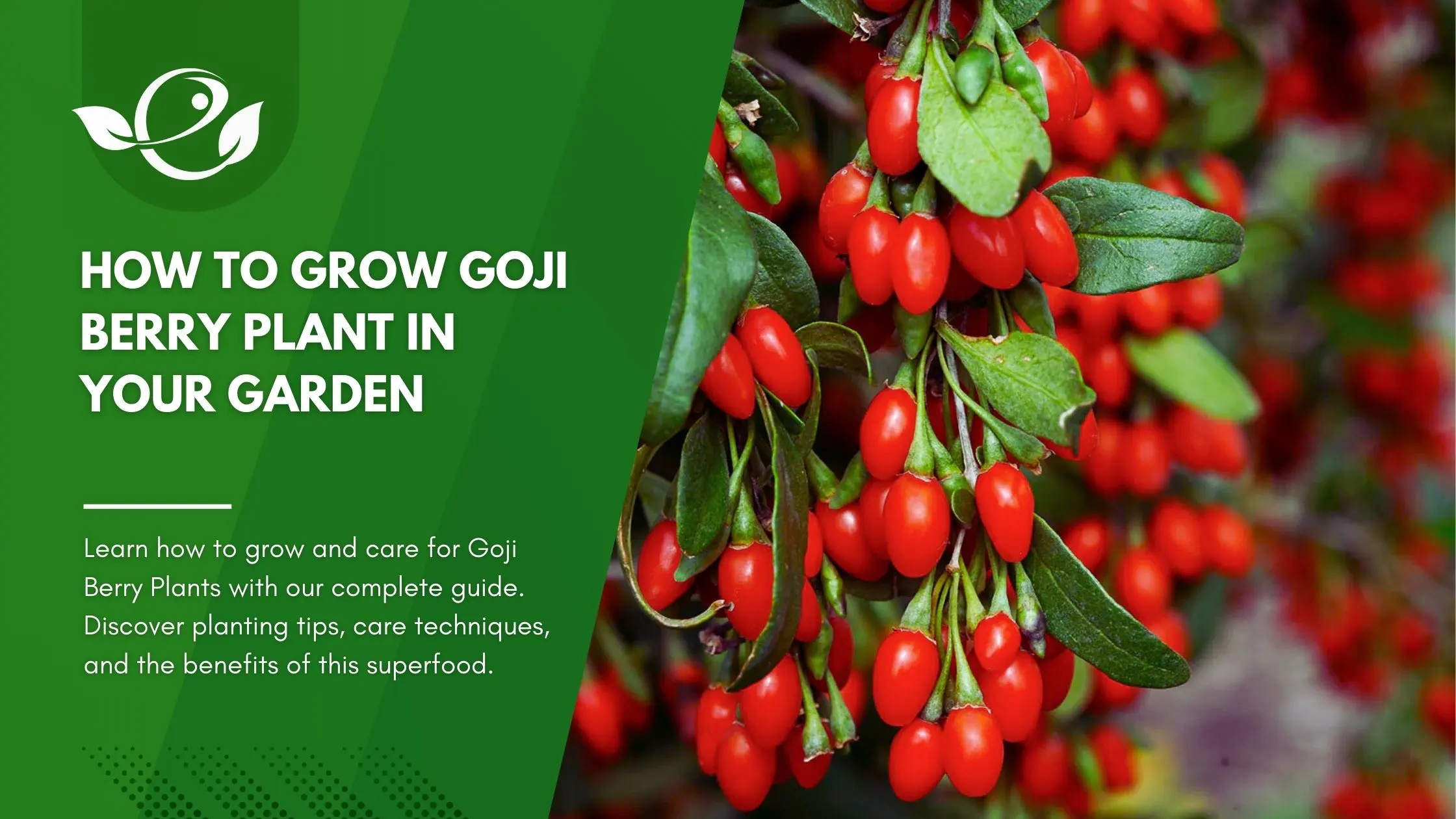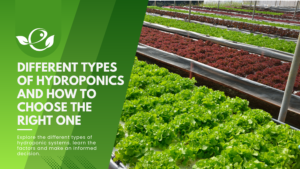Table of Contents
Goji Berry Plants, cherished for their vibrant red berries and exceptional health benefits, have been a staple in traditional medicine and modern diets alike. Known as wolfberries, these plants are not only nutritionally dense but also an excellent addition to any home garden due to their low maintenance and aesthetic appeal. Whether you’re an experienced gardener or just starting, cultivating goji berries offers a rewarding experience, yielding a superfood packed with antioxidants, vitamins, and minerals. Growing goji berries can be a fulfilling experience that rewards you with years of nutritious harvests. In this comprehensive guide, you’ll learn about their ideal growing conditions, care requirements, common challenges, and more, ensuring your journey with goji berries is a fruitful one.
Benefits of Growing Goji Berry Plant
- Nutritional Powerhouse: Goji berries are celebrated for their high nutritional value. They are rich in antioxidants, vitamins A and C, iron, zinc, and dietary fiber. These nutrients contribute to improved immunity, skin health, and vision. Additionally, goji berries contain all eight essential amino acids, making them a rare and valuable source of plant-based protein. Incorporating goji berries into your diet can also help regulate blood sugar levels and support heart health.
- Culinary Versatility: Goji berries are not just nutritious but also versatile in the kitchen. Their slightly sweet and tangy flavor pairs well with both savory and sweet dishes. You can eat them fresh, mix them into granola or trail mix, blend them into smoothies, or steep them in teas. Dried goji berries can also be used as a topping for salads, yogurt, or oatmeal, adding a nutritional boost to everyday meals.
- Aesthetic and Functional Garden Addition: The Goji Berry Plant’s bushy growth habit and vibrant berries make it an attractive feature in any garden. Their cascading branches and bright fruits add visual appeal, creating a stunning focal point. Beyond aesthetics, these plants are hardy and adaptable, thriving in various climates and soil conditions.
- Low Maintenance and Long-Term Yield: Goji Berry Plants are relatively easy to grow, requiring minimal care once established. With proper pruning and maintenance, they can produce fruit for up to 15 years, offering a long-term investment in your garden. Their drought-tolerant nature and resistance to many common pests make them a reliable choice for gardeners seeking low-maintenance crops.
Ideal Growing Conditions for Goji Berry Plant
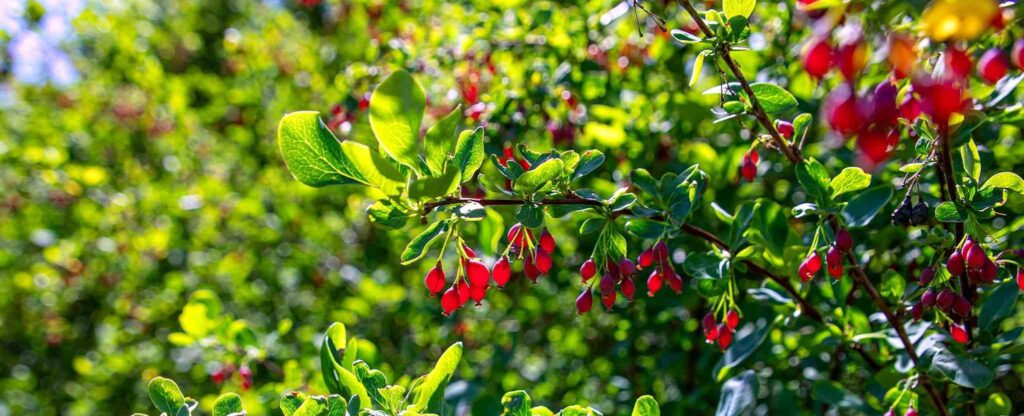
- Climate Requirements: Goji Berry Plants thrive in USDA hardiness zones 5 through 9, making them suitable for a wide range of regions in America. They are highly adaptable to temperature fluctuations, tolerating cold winters as low as -15°F and hot summers. However, extreme conditions such as prolonged frost or intense heat waves may require additional care, like mulching or providing temporary shade.
- Sunlight Needs: These plants thrive in full sun, requiring at least 6-8 hours of direct sunlight daily to maximize fruit production. While they can tolerate partial shade, reduced sunlight may lead to fewer berries and slower growth. If you’re growing goji berries in a region with intense heat, providing some afternoon shade can prevent heat stress and sunburn on the leaves.
- Soil Preferences: Goji Berry Plants prefer well-draining soil with a slightly alkaline pH, ranging from 6.8 to 8.1. Heavy clay soils or waterlogged conditions can harm the roots, so it’s essential to improve drainage by incorporating sand or gravel if needed. Adding organic matter like compost or aged manure enhances soil fertility, promoting robust growth. For gardeners uncertain about soil quality, conducting a soil test can provide valuable insights to ensure the ideal environment.
Recommended Goji Berry Varieties
Although Goji Berry Plants can be propagated from seeds, choosing a named cultivar ensures higher quality and productivity. Below are some cultivars widely recommended for home gardens:
| Cultivar Name | Key Features | Best For | Images |
| Phoenix Tears | Compact growth, high fruit yield, and mild sweet-tangy flavor. | Small gardens or container growing. | 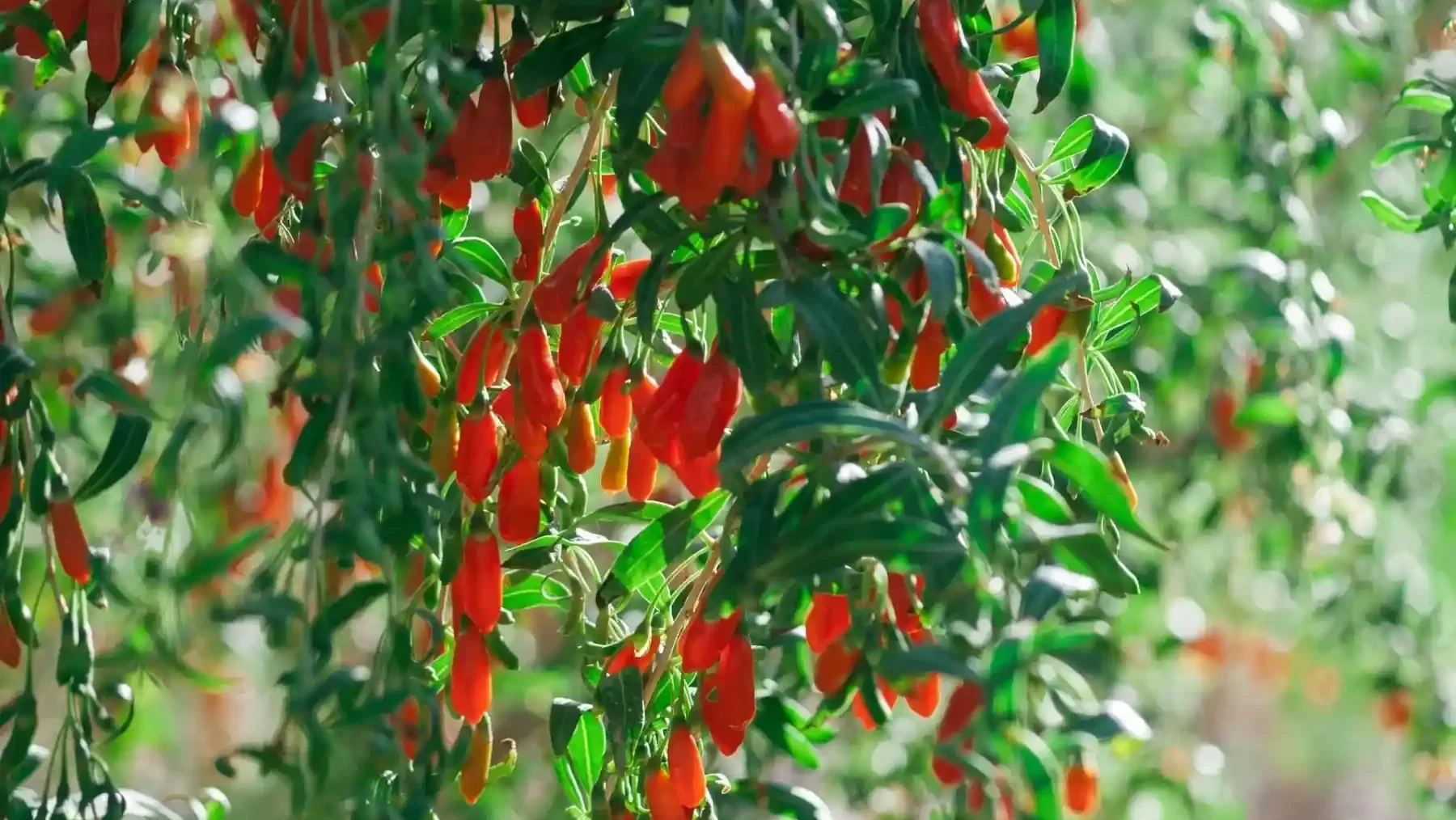 |
| Crimson Star | Also known as Ningxia #1; hardy and drought-tolerant with early fruiting (1-2 years post-planting). | Regions with variable climates. | 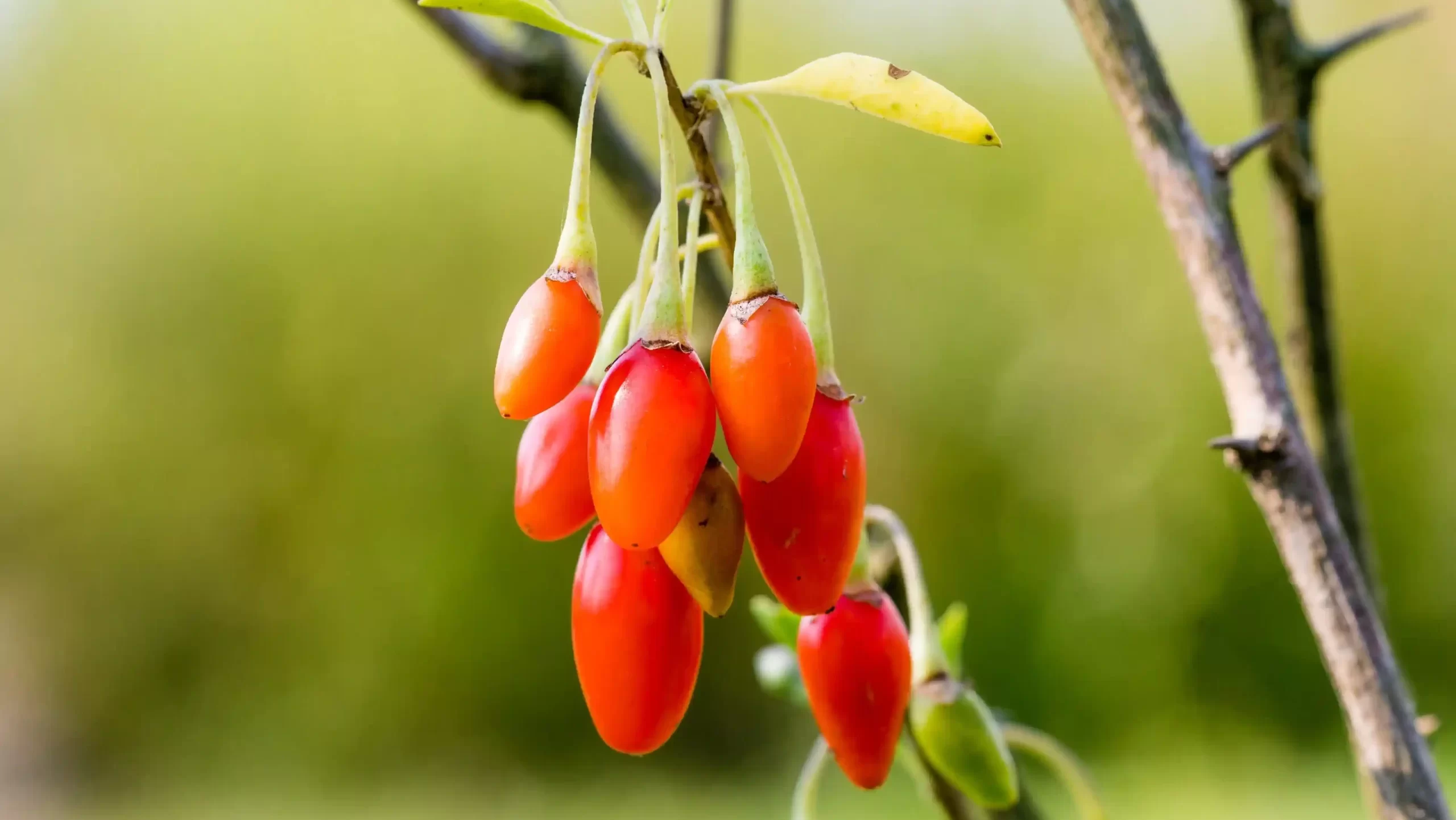 |
| Sweet Lifeberry | Thornless variety with sweeter berries compared to other cultivars. | Home gardeners seeking fresh fruit for snacking. | 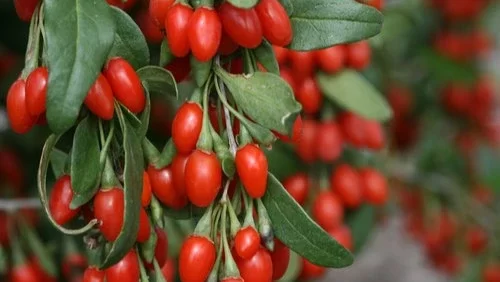 |
| Big Lifeberry | Known for its vigorous growth and larger-than-average berries. | High-yield gardening and commercial production. | 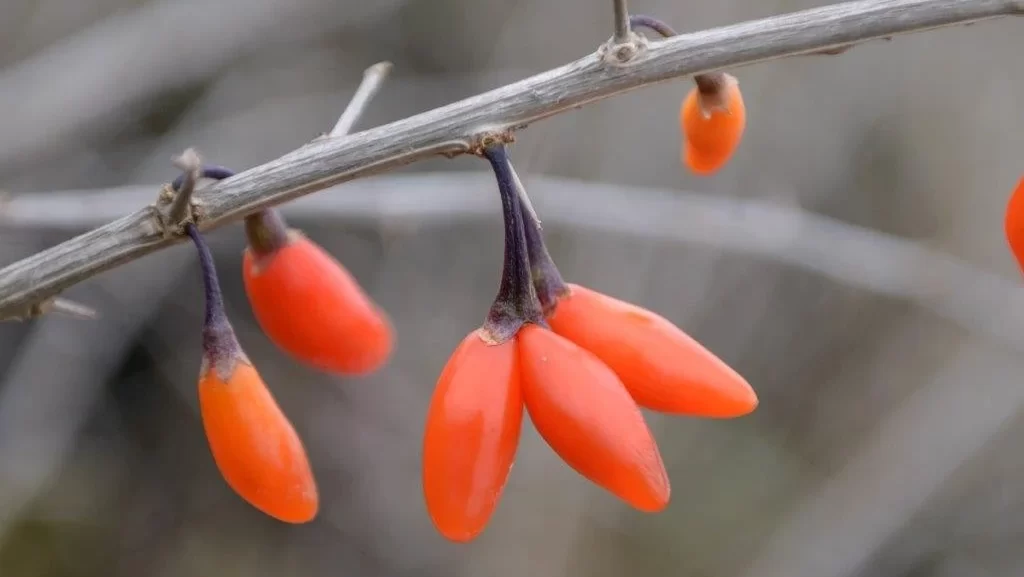 |
| Wolfberry Agrodevco | Limited availability; productive with moderate care requirements. | Specialty growers and experienced gardeners. | 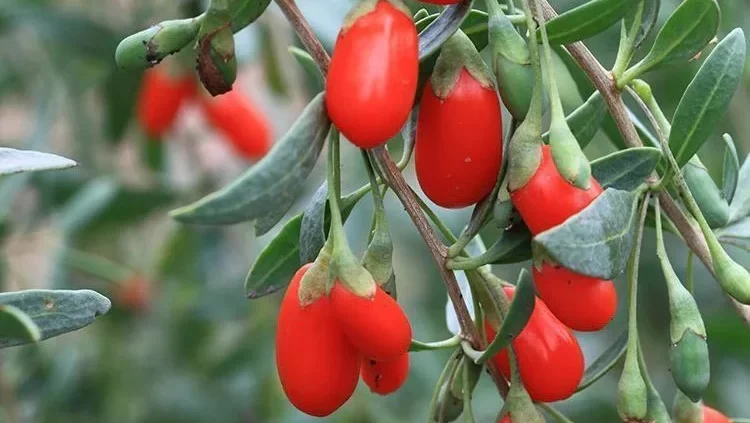 |
In China, where goji berries are predominantly cultivated, Lycium barbarum L. var. barbarum is the most common variety. For American gardeners, options like ‘Crimson Star’ and ‘Phoenix Tears’ are ideal for their adaptability and reliability. While some nurseries sell generic plants labeled as Lycium barbarum, opting for named cultivars ensures better growth and yield potential. Beginners are encouraged to start with readily available cultivars like ‘Sweet Lifeberry’ for ease of care and consistent production.
How to Plant Goji Berry Plant
Seeds vs. Seedlings
Deciding whether to start with seeds or seedlings depends on your timeline and experience level. Growing Goji Berry Plants from seeds is a rewarding process, but it requires patience, as it may take 2-3 years to produce fruit. Starting with seedlings is more practical for most gardeners, as they establish faster and begin fruiting within the first year or two.
Step-by-Step Planting Guide
- Choosing the Right Location: Select a site that receives ample sunlight—at least 6-8 hours of direct sunlight daily. Avoid areas prone to waterlogging, as poor drainage can harm the roots. If planting in colder regions, choose a location with some protection from strong winds.
- Preparing the Soil: Prepare the soil by loosening it to a depth of 12-18 inches to ensure proper root penetration. Mix in organic matter like compost or aged manure to improve fertility and drainage. If the soil is too acidic, add lime to adjust the pH to a slightly alkaline range of 6.8 to 8.1.
- Planting Depth and Spacing:
- Depth: Dig a hole twice as wide and deep as the root ball of the seedling. This allows roots to spread easily.
- Spacing: Space multiple plants 4-6 feet apart to prevent overcrowding, which can lead to poor air circulation and increase the risk of disease.
- Positioning the Plant: Carefully remove the seedling from its container and inspect the roots. If the roots are bound, gently loosen them to encourage outward growth. Place the plant in the hole with the crown (where the stem meets the roots) level with the soil surface. Backfill with soil, firming it gently around the base of the plant to remove air pockets.
- Watering After Planting: Water the plant thoroughly immediately after planting. This helps settle the soil and provides the roots with essential moisture. Be sure to keep the soil evenly moist during the establishment phase, which typically lasts 6-8 weeks.
- Mulching for Moisture Retention: Apply a 2-3 inch layer of organic mulch, such as straw or wood chips, around the base of the plant. Mulching helps retain soil moisture, regulate temperature, and suppress weeds. Keep the mulch a few inches away from the stem to prevent rot.
Container Planting
If you lack garden space, Goji Berry Plants can also be grown in large containers. Choose a pot with a diameter of at least 18 inches and ensure it has drainage holes. Use a well-draining potting mix and follow the same planting steps as for in-ground plants. Container plants may need more frequent watering and fertilization due to limited soil volume.
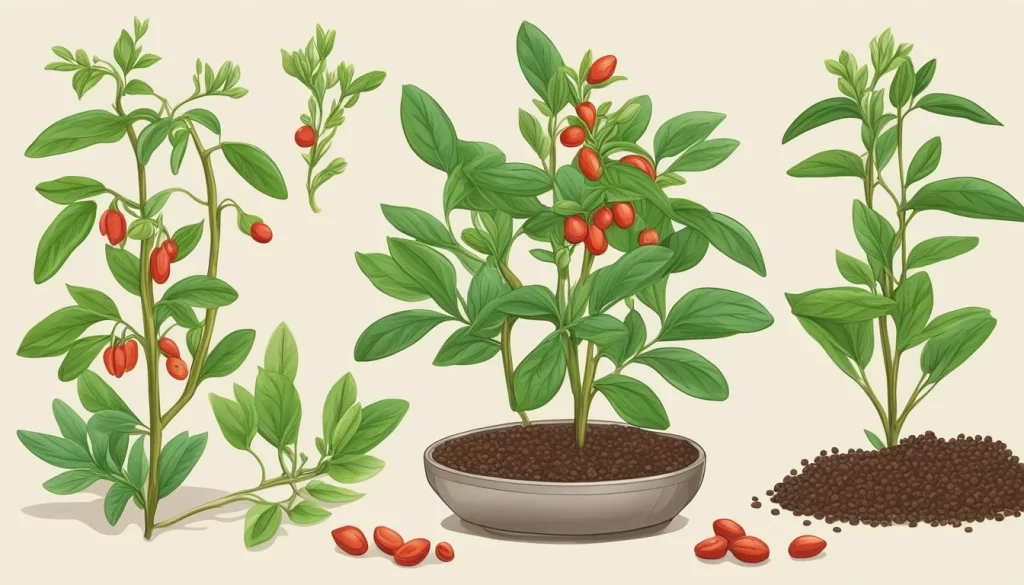
Transplanting Tips
If you’re transplanting a Goji Berry Plant from one location to another, do so during the dormant season (late fall to early spring). Carefully dig around the root zone to minimize root damage and replant promptly in a prepared site. Water thoroughly after transplanting to help the plant adjust to its new environment.
Caring for Your Goji Berry Plant
- Watering Schedule: Goji Berry Plants require consistent moisture, especially during the first year of growth. Deep watering once or twice a week ensures that water reaches the roots, promoting healthy development. During hot and dry spells, increase the frequency of watering to prevent the soil from drying out completely. However, avoid overwatering, as soggy soil can lead to root rot. Using a drip irrigation system or soaker hose is an efficient way to provide consistent moisture without waterlogging.
- Fertilization: Goji Berry Plants benefit from balanced nutrition to maintain vigorous growth and high fruit yield. Use a slow-release, balanced fertilizer with an NPK ratio of 10-10-10 in early spring as the plant starts to grow. Supplement this with a liquid seaweed or fish emulsion feed every 4-6 weeks during the growing season. Avoid over-fertilizing, as excessive nitrogen can lead to lush foliage at the expense of fruit production.
- Pruning Techniques: Regular pruning is essential to manage the size and shape of your Goji Berry Plant and encourage healthy fruiting. Perform light pruning in early spring before new growth appears. Remove any dead, damaged, or diseased branches to improve air circulation and reduce the risk of fungal infections. During the growing season, thin out overcrowded branches and pinch back new growth to encourage bushier growth and more flowers. Prune suckers that emerge from the base to prevent the plant from becoming overly dense.
- Weed Management: Weeds compete with Goji Berry Plants for water, nutrients, and sunlight. Regularly remove weeds around the base of the plant to reduce competition and improve growth. Applying a layer of mulch not only retains soil moisture but also suppresses weed growth, making maintenance easier.
- Winter Care: In regions with harsh winters, protect your Goji Berry Plants from freezing temperatures. Apply a thick layer of mulch around the base of the plant to insulate the roots. In extreme cold, consider covering the plant with burlap or frost cloth to shield it from frost damage. Container-grown plants can be moved to a sheltered location, such as a garage or greenhouse, during winter months.
Common Pests and Diseases
| Pest/Disease | Symptoms | Prevention/Treatment |
|---|---|---|
| Aphids | Stunted growth, yellowing leaves | Spray with water, use insecticidal soap or neem oil, introduce natural predators like ladybugs. |
| Spider Mites | Speckled leaves, silvery webbing | Mist foliage, apply insecticidal soap or horticultural oil, introduce predatory mites. |
| Leafhoppers | Yellow/white stippling on leaves | Use row covers, apply neem oil or pyrethrin-based sprays. |
| Powdery Mildew | White powdery coating on leaves/stems | Space plants, prune for airflow, apply fungicides like sulfur or potassium bicarbonate. |
| Root Rot | Wilting, yellowing leaves | Ensure well-draining soil, avoid overwatering, remove and replant affected plants. |
| Anthracnose | Dark, sunken lesions on plant parts | Avoid overhead watering, use copper fungicides, remove infected plant parts. |
Integrated Pest and Disease Management
Adopting integrated pest and disease management (IPDM) practices can help maintain a healthy Goji Berry Plant. Regularly inspect your plants for signs of pests or diseases and address issues promptly. Combining cultural, biological, and chemical control methods ensures sustainable and effective management.
How to Harvest and Use Goji Berries
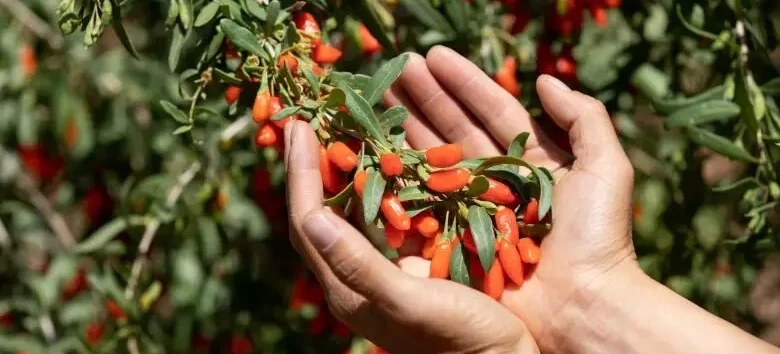
- When to Harvest? Goji berries are ready for harvest when they turn bright red and feel slightly soft to the touch. This typically occurs in late summer or early fall, depending on your growing region. Harvesting at the right time ensures the best flavor and nutrient content.
- Harvesting Techniques: To harvest, gently pluck the berries by hand or use pruning shears if the berries are firmly attached. Be cautious to avoid damaging the plant or bruising the berries. If you’re working with a larger harvest, spreading a cloth or tarp underneath the bush and lightly shaking the branches can help collect ripe berries efficiently.
- Storage Options:
- Fresh Storage: Fresh goji berries can be stored in the refrigerator for up to a week. Place them in a breathable container to prevent excess moisture buildup.
- Freezing: Freeze goji berries for long-term storage. Spread them in a single layer on a baking sheet, freeze until solid, and then transfer to an airtight freezer-safe bag.
- Drying: To make dried goji berries, use a food dehydrator or an oven set to a low temperature (about 120°F). Store dried berries in an airtight container in a cool, dark place for up to a year.
- Culinary Uses: Goji berries are incredibly versatile in the kitchen. Fresh or dried, they can be added to:
- Smoothies
- Salads
- Trail mixes
- Teas
- Baked goods like muffins or cookies Their slightly sweet and tangy flavor pairs well with both savory and sweet dishes, making them a staple ingredient in health-conscious recipes.
Troubleshooting Tips
- Poor Growth: If your plant is growing slowly or showing signs of stress, check the soil pH and amend it if necessary. Ensure the plant receives adequate sunlight, as insufficient light can stunt growth.
- Low Fruit Yield: A lack of flowers or fruits can result from improper pruning, nutrient imbalances, or poor pollination. Regularly prune to remove unproductive branches, and use a balanced fertilizer to address nutrient deficiencies. Consider planting multiple goji plants to improve cross-pollination or attract pollinators by planting flowering plants nearby.
- Pest Problems: Persistent pest issues like aphids or spider mites may require targeted action. Use organic pest control methods such as neem oil, insecticidal soaps, or introducing beneficial insects like ladybugs and lacewings. Additionally, maintaining proper plant hygiene by removing debris and weeds can deter pests.
- Disease Management: If fungal diseases like powdery mildew or root rot occur, adjust watering practices to keep the foliage dry and improve soil drainage. Applying organic fungicides can help manage infections effectively. For severe cases, remove and dispose of affected plant parts to prevent the spread of disease.
- Winter Protection: In colder regions, protect your Goji Berry Plant from harsh winters by mulching around the base to insulate the roots. Covering the plant with burlap or frost blankets can also shield it from extreme cold.
FAQs
Can you grow goji berries in the US?
Yes, Goji Berry Plants thrive in USDA hardiness zones 5-9.
Can you eat goji berries right off the plant?
Yes, fresh goji berries are safe and nutritious to eat directly from the plant.
How long does it take for a goji berry tree to bear fruit?
Typically, 1-2 years after planting a seedling, though full production takes 3-5 years.
Do goji berry plants come back every year?
Yes, they are perennial plants that return annually with proper care.
Can you eat goji berries raw?
Yes, they can be eaten raw and have a mildly sweet, tangy flavor.
Are goji berries invasive?
Goji Berry Plants can become invasive if not pruned and controlled, as they spread via suckers.
Does goji berry need a trellis?
A trellis is optional but can help support growth and improve air circulation.
Why are goji berries expensive?
They are labor-intensive to harvest and often imported, increasing their cost.
What is the lifespan of a goji plant?
With proper care, goji plants can live and produce fruit for up to 15 years.
That’s It
Growing Goji Berry Plants in your garden is an investment in health, beauty, and sustainability. With proper care and attention, these resilient plants can produce bountiful harvests of nutrient-rich berries for years to come. Whether you enjoy them fresh, dried, or incorporated into recipes, goji berries are a versatile superfood that adds immense value to your lifestyle. By understanding their growing conditions, addressing common challenges, and selecting the right cultivars, you can confidently cultivate a thriving goji berry plant. Start your gardening journey today and relish the joy of homegrown superfoods!
